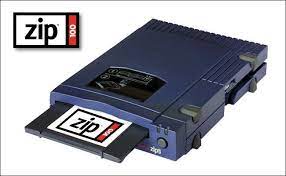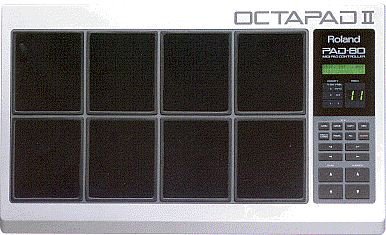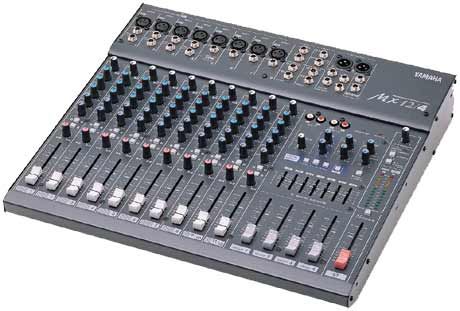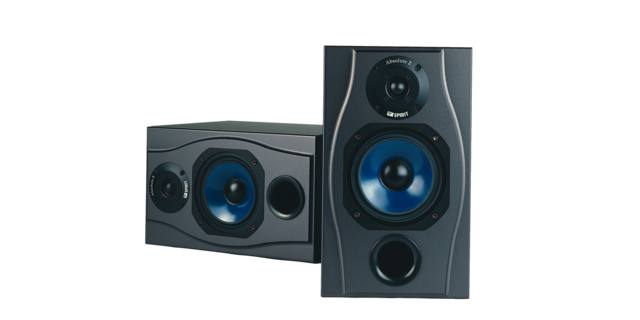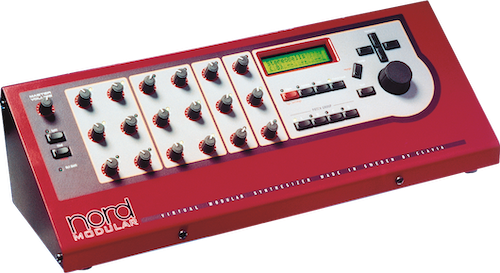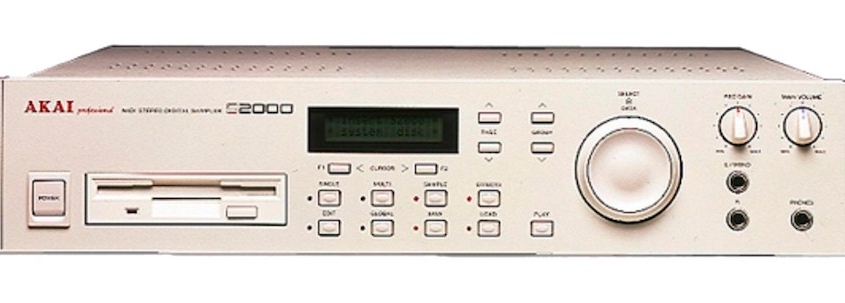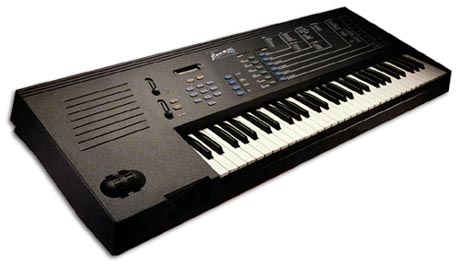When the EZ-drive broke down I didn’t really feel like buying more of the same. when something breaks down on you, you tend to get a bit careful. But I needed a SCSI-Drive for my samples, and Zip-drives seemed to be all the rage. So I got one. And when that broke down, I got another one. And when that one broke down, still another one. Apart from it breaking down constantly, it was a real joy.
My hands and feet are constantly drumming. My ex-next-desk neighbour at the office constantly used to tell my leg to shut up, as his monitor kept jumping up and down. The logical thing for me to do was to get something that, when drummed, actually would result in something useful. The Octapad is a nice concept, but I didn’t keep this for the simple fact that it was very noisy; drumming it sounded like drumming a plastic bucket, and considering I lived in a block of flats at the time I got this, I just didn’t feel comfortable using it.
The first external effect I ever bought. Also turned out to be the last external effect I ever bought, as effects turned out to work pretty well inside the box. Really great sound, this one has. At one time I used its S/PDIF connection as a digital recording interface to my SoundBlaster card: I would route the audio to be recorded into the MPX and it would be transferred digitally to the computer. Or, later, the Akai S-2000.
Later, it became part of my modular rig, but as I never really used it, I sold it.
My first trusty mixer. Worked like a charm and served me well for many years. For all practical purposes it became obsolete when I got my first FireFace, but I only sold it after Judgment Day.
My first real monitors. A huge difference compared to my earlier plastic boxes. Managed several years with them, but ended up upgrading them to active monitors. As one does.
Sounds like a Swedish product. The name, not the sound.
This is one of my all time favorites. The modular concept is extremely pedagogic, you simply can’t avoid learning how synthesis works while you patch, or even while you study what others have patched. The user community makes sure that you really don’t have to make your own patches if you really don’t want to (you do want to, though. It’s inevitable). There are tens of thousands of patches downloadable for it, each patch potentially an entire synthesizer model (as opposed to a single sound), and new patches show up daily on the NM mailing list. I still have have thousands of patches on my HD which I haven’t checked out. The NM shifted my interest from sampling technology to analog synthesis. The only gripe is the “mere” 4-part multitimbrality,
I eventually sold this one, but I remember it had a few very nice sounds, and I particularly liked the reverb, which sounded very warm and “distantly present”. My main problem with this was simply that it was a pain to program, due to the 2-line display and what felt like a deep menu hierarchy, so I never really got past the presets, which is a crying shame, as I am sure there were some interesting possibilities. I also never figured out why the effects settings kept changing even though I didn’t want them to. I regret selling it, and it is likely I will get another one at some point. I have now also invested in Sound Diver, which should make the programming much easier (or, in this case, possible). Another possibility is that, as Korg has released it as a soft synth, I might go for that one instead.
This was the first machine that really felt like a synth, with LFO’s, filters and the works. A very straightforward machine and very easy to use, but it didn’ t sound quite as warm as the Emax, but that didn’t really bother me. The Akai got me into actual sound programming, and having used this for a while, I started to get the hang of synthesis, at least the sampler kind of synthesis. FOr several years, it was my main instrument, but once I noticed I hadn’t really used it for anything else than as a HD recording device for the past year or so, I traded it for a Yamaha DTXPress drum set in the beginning of 2002. Even though it is fondly remembered, I don’t regret selling it. My K2600R does everything the Akai did, and more.
My first sampler. A definite nostalgia factor associated with this one, as Depeche Mode toured with Emaxes for several tours. So I just had to have one. The moment I got it, I realized that its 2 MB memory simply wasn’t enough, so the same week I bought an Akai S2000. I never really used the Emax’ sound engine in my music. I still loved the sound, which was very soft and powerful, but compared to the Akai, it simply was too cumbersome to use. It served mainly as my main keyboard until I sold it in 2002. Visually the Emax is extremely pleasing, and it is a very versatile keyboard: for example, in case you didn’t have a real mixer, you could connect 5 (I think) external stereo sound sources to the insert buses at the back and let the Emax mix the signals and output them all through the Main Out. Therefore an excellent first keyboard for anyone who might want to expand their setup later. With more RAM and a software editor I probably never would have sold it. A real beauty. I regret not having it anymore. The nostalgia factor is still enormous.
For the JX-1 I a friend built me a MIDI interface from scratch. Piece of cake, he said. I thought that was pretty hardcore.
This was my first commercial MIDI interface. Plugged into the ISA slot of the PC. Plenty of MIDI channels for my current setup! For the rest of my life? Nahh…but still for quite for many years.

